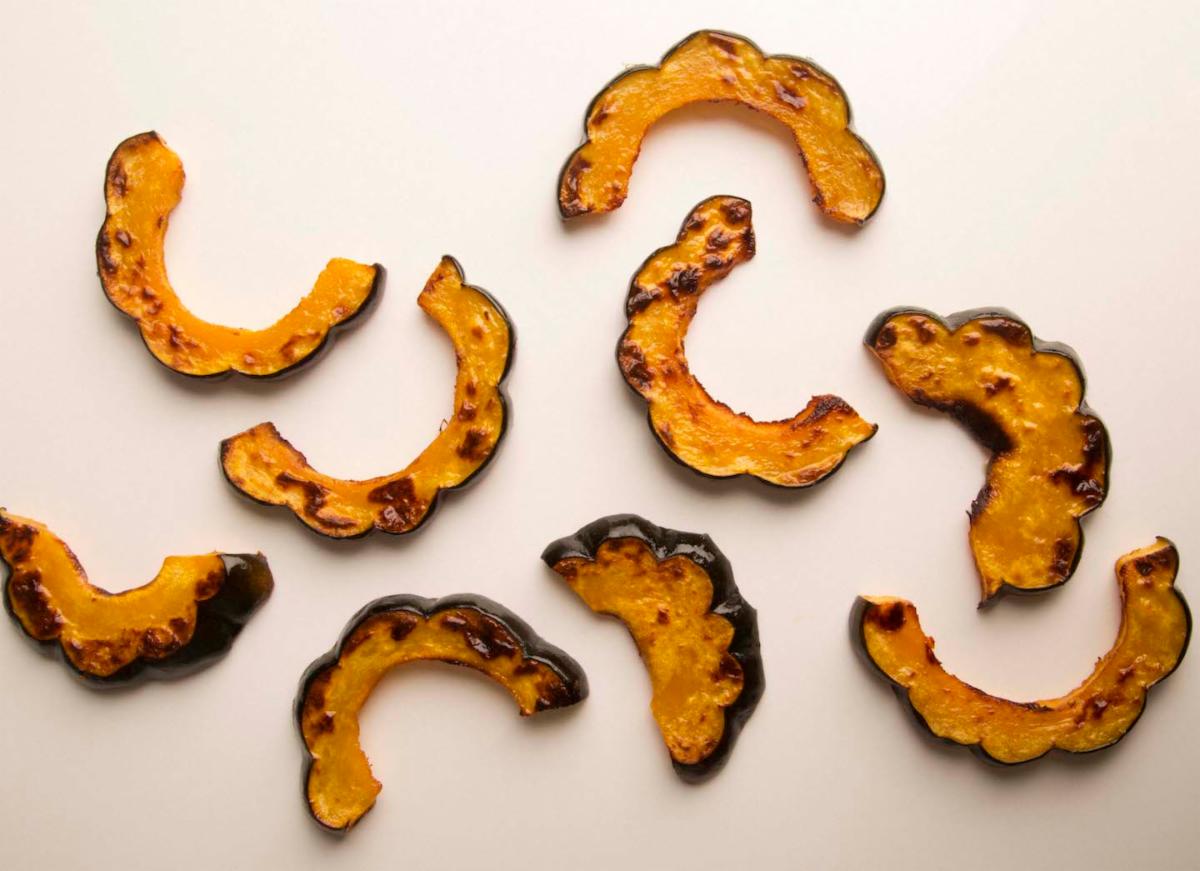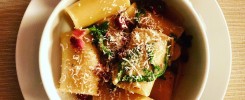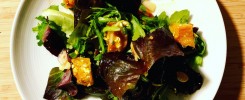Basic Roasted Winter Squash is the sweetest, tastiest method of cooking of these winter veggie staples. Once cooked, they can be pureed for pies or soups, tossed into salads, turned into pasta sauce or ravioli filling, folded into frittatas ]or simply eaten as side top fish or poultry. Thin-skinned squashes that don't need peeling are acorn (pictured above) Kabocha (calabasa) and Delicata. These you can just cut into slices. The thicker-skinned guys, talking to you butternut squash, are best peeled and diced. Either way, the cooking method is the same.
Basic Roasted Winter Squash is the sweetest, tastiest method of cooking of these winter veggie staples. Once cooked, they can be pureed for pies or soups, tossed into salads, turned into pasta sauce or ravioli filling, folded into frittatas ]or simply eaten as side top fish or poultry

Preheat the oven to 425F/220C. Line 1-2 baking sheets with parchment as needed. Preheat in the oven on a center shelf.
Cut the squashes in half lengthwise. Scoop out the seeds (See Ann's Tips). Placing the squash cut side down onto a cutting board, cut across into 3/4" thick slices. Set aside.
In a large bowl, add the olive oil. Tip in the cut squash and sprinkle with a generous pinch of salt. Using your hands, turn the squash in the bowl to coat with the olive oil and salt When the squash is evenly coated and glistening with oil, remove the baking sheet(s) from the oven.
Tip the squash onto the baking sheet in a single layer. The layer shouldn't be too crowded or the squash will steam, not roast. Place the squash in the oven and roast on a middle shelf for 15-20 minutes. Turn the squash and cook another 15-20 minutes or until browned in spots and soft enough to pierce with a toothpick. It's ready to use either as a side or as part of another recipe.
- Butternut squash must be peeled. Acorn, delicata, and calabasa/kabocha don't need peeling. All must be deseeded.
- The seeds are edible. Spread out n a separate lined baking sheet. Sprinke with salt. Roast until golden, and the membranes have dried and can be rubbed off. These are pepitas, and you can eat them as a snack or in salads.
Ingredients
Directions
Preheat the oven to 425F/220C. Line 1-2 baking sheets with parchment as needed. Preheat in the oven on a center shelf.
Cut the squashes in half lengthwise. Scoop out the seeds (See Ann's Tips). Placing the squash cut side down onto a cutting board, cut across into 3/4" thick slices. Set aside.
In a large bowl, add the olive oil. Tip in the cut squash and sprinkle with a generous pinch of salt. Using your hands, turn the squash in the bowl to coat with the olive oil and salt When the squash is evenly coated and glistening with oil, remove the baking sheet(s) from the oven.
Tip the squash onto the baking sheet in a single layer. The layer shouldn't be too crowded or the squash will steam, not roast. Place the squash in the oven and roast on a middle shelf for 15-20 minutes. Turn the squash and cook another 15-20 minutes or until browned in spots and soft enough to pierce with a toothpick. It's ready to use either as a side or as part of another recipe.
- Butternut squash must be peeled. Acorn, delicata, and calabasa/kabocha don't need peeling. All must be deseeded.
- The seeds are edible. Spread out n a separate lined baking sheet. Sprinke with salt. Roast until golden, and the membranes have dried and can be rubbed off. These are pepitas, and you can eat them as a snack or in salads.

